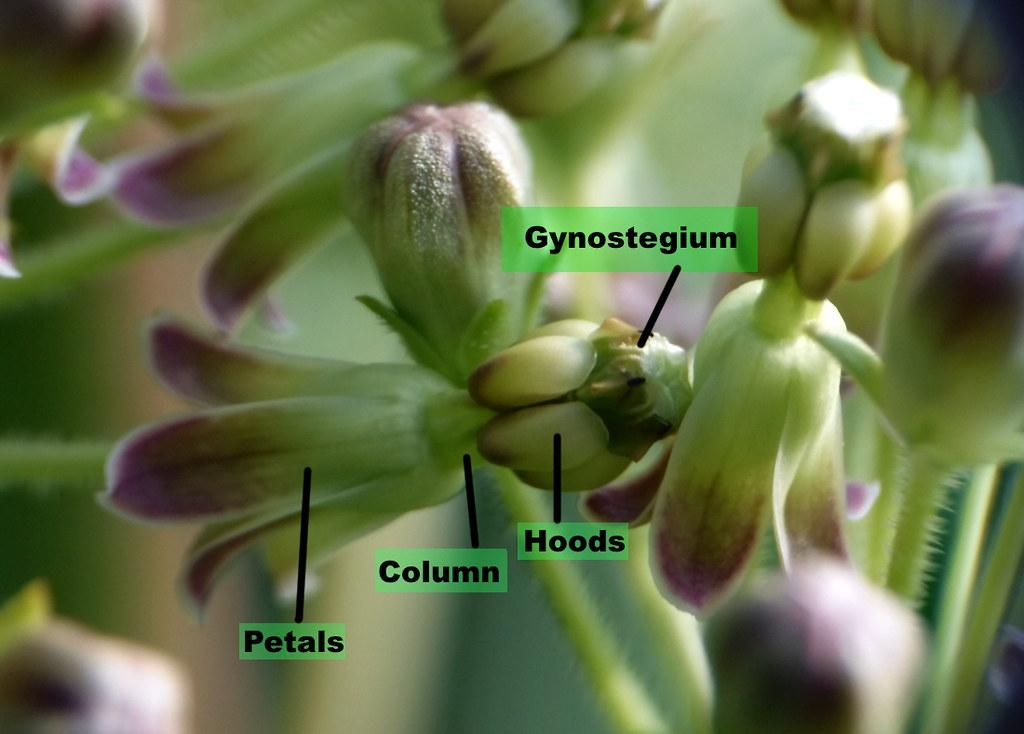
Union of stamens with carpels form a complex called
(A) Gynostegium
(B) Syngenesious
(C) Gynandrium
(D) None of the above
Answer
472.5k+ views
Hint: In flowers the gynoecium is the female reproductive organ of the plant where the androecium is the male reproductive organ. The gynoecium includes style, stigma, ovary and ovule. The androecium includes anther, filaments and pollen grains of the flower.
Complete Answer:
Gynostegium is defined as the unit in which the stamens, style and the stigmatic surface of the carpels are united together. This is the specialized cap-like tissue which acts as the protective membrane for the gynoecium by covering it.

This is mainly common in the plants of the Asclepiadaceae. Syngenesious is defined as the condition in which the filaments are left free but the anthers are fused to the tubular mass as the single unit. This type of arrangement is found in the plants belonging to the family of the asteraceae.
The sunflower, dahlia etc. are included in this family. Gynandrium is the condition in which the stamens are united along the length. This is the combined structure of the male and female stamens. Hence in the gynostegium, the stamens and the carpels form the complex.
Thus, the option (A) is correct.
Note: The condition of the gynostegium is present in the plants that come under the family of Asclepiadaceae. These are also called milkweed. They possess the leafless stem. Asclepius syriaca, Ceropegia stapeliiformis, Burkina Faso, Microloma calycinum etc. are included in this family.
Complete Answer:
Gynostegium is defined as the unit in which the stamens, style and the stigmatic surface of the carpels are united together. This is the specialized cap-like tissue which acts as the protective membrane for the gynoecium by covering it.

This is mainly common in the plants of the Asclepiadaceae. Syngenesious is defined as the condition in which the filaments are left free but the anthers are fused to the tubular mass as the single unit. This type of arrangement is found in the plants belonging to the family of the asteraceae.
The sunflower, dahlia etc. are included in this family. Gynandrium is the condition in which the stamens are united along the length. This is the combined structure of the male and female stamens. Hence in the gynostegium, the stamens and the carpels form the complex.
Thus, the option (A) is correct.
Note: The condition of the gynostegium is present in the plants that come under the family of Asclepiadaceae. These are also called milkweed. They possess the leafless stem. Asclepius syriaca, Ceropegia stapeliiformis, Burkina Faso, Microloma calycinum etc. are included in this family.
Recently Updated Pages
Can anyone list 10 advantages and disadvantages of friction

What are the Components of Financial System?

How do you arrange NH4 + BF3 H2O C2H2 in increasing class 11 chemistry CBSE

Is H mCT and q mCT the same thing If so which is more class 11 chemistry CBSE

What are the possible quantum number for the last outermost class 11 chemistry CBSE

Is C2 paramagnetic or diamagnetic class 11 chemistry CBSE

Trending doubts
The correct order of melting point of 14th group elements class 11 chemistry CBSE

One Metric ton is equal to kg A 10000 B 1000 C 100 class 11 physics CBSE

What is the specific heat capacity of ice water and class 11 physics CBSE

State the laws of reflection of light

Proton was discovered by A Thomson B Rutherford C Chadwick class 11 chemistry CBSE

Why does niobium have a d4s1 electron configuration class 11 chemistry CBSE




